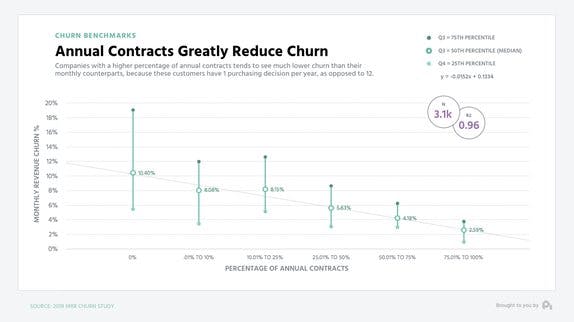Recurring billing is convenient for customers and predictable for companies. Though appealing to everyone, it isn’t without its drawbacks. Certain factors need to be accounted for - let's explore.
From CRM software to coffee beans, streaming services to designer gowns, recurring billing is the lifeline for every subscription business.
It’s easy to see why—automatic charges for subscriptions are simple and convenient for customers and predictable and sustainable for companies. Though recurring billing is appealing to everyone, it isn’t without its drawbacks. Certain factors need to be accounted for when billing this way, and using an effective pricing strategy becomes crucial to success.

What is recurring billing?
Recurring billing is a payment model used when a subscription business charges a customer’s credit card for products or services on a regular billing schedule. Subscription services tend to charge this on a monthly or annual schedule, until the customer withdraws permission or cancels their subscription.
Some recurring billing examples are:
- Internet services
- Cable services
- Gym subscriptions
- Pet food subscriptions
Recurring billing benefits businesses and customers alike
The reason so many subscription businesses have adopted recurring billing is because of the benefits for both customers and businesses. Customers enjoy the convenience and simplicity of automatic payment methods, and merchants benefit from prompt and consistent payment.

If you haven’t already, here’s why you should consider adopting recurring billing for your business.
Convenience for customers and merchants
The simplicity and convenience of recurring billing helps foster peace of mind for customers. Customers simply sign up and input their payment information once, knowing the company will be paid automatically each cycle. Instead of relying on their memory to make sure bills are paid on time, customers set it and forget it.
Predictable revenue
For merchants, predictable and reliable revenue simplifies every aspect of doing business.
A subscription billing solution allows for more accurate forecasts of how much revenue your business will bring in over a set period of time in the future, making it easier to forecast your success (or, god forbid, giving you an early failure indicator). With accurate forecasts, you can make more educated growth decisions, investing wisely in sales and marketing without fear of overspending.
Consistent and regular cashflow can also free you from the sales and marketing treadmill. You can focus more effort on retaining existing customers and providing the best possible service, rather than spending all your time pitching potential leads that may only purchase once.
Appealing prices
Offering subscription billing lets you set lower prices in return for regular scheduled payments.
While you might be charging more over a period of time than you would for a lump sum payment, customers often prefer to pay smaller installments. This is great for getting new customers on board and better for customers looking for a discount.
Automating your billing also eliminates much of the administrative work that goes along with collecting payments and managing sales. These cost reductions can then be passed on to your customers to help lower prices even further.
Now we’ve seen how recurring billing can benefit both subscription-based businesses and customers, let’s take a look at a few of the drawbacks that come with this billing solution.
Recurring billing does have some drawbacks
Subscription business is exploding in every sector, but recurring billing alone isn’t a silver bullet. The added complexity for merchants and the risk of billing errors for customers means automated payments aren’t always suitable for every company.
Recurring billing can sometimes make it more difficult for customers to correct billing problems. They may not even notice problems with the amount they’re paying for quite a while—and when they do notice, it can take significant time and effort from both parties to resolve any issues.
Managing recurring payments can be more complex than managing one-time sales. You need the right tools and processes in place for tracking customers on different billing cycles, paying different amounts, and with different contract lengths. Most SaaS companies combat this complexity by using an integrated subscription management tool that helps ensure customers are always charged the right amount at the right time.
Annual vs. monthly billing cycles
Customer retention is the key to profitability in every recurring revenue business.
Customers need to feel like they’re getting value from the service over time. If they don’t, then they’ll churn. If they do, they’ll renew. On the surface, it sounds straightforward, but managing churn is anything but simple—it’s a process that looks different for every business and every market.
There is one major factor, though, that can help reduce churn in nearly every subscription-based business, and that’s lengthening your subscription cycles. Annual billing has been shown to be more successful at reducing churn than monthly billing.
On the administrative side, annual billing cycles reduce the need for monthly invoice management, giving you time back to spend on more valuable tasks. Though the higher upfront cost means a bigger commitment from customers, it gives companies more time to prove their value before customers make the decision to renew or cancel. And this additional value leads directly to lower churn.

There’s a strong correlation between increasing the proportion of annual versus monthly billing cycles and reducing churn—companies with a majority of customers on annual contracts see dramatically lower churn rates than those who only offer monthly contract lengths.
Recurring billing and your pricing strategy
Whether you offer your customers monthly or annual plans (or both), make sure you’re managing your pricing to maximize revenue. Setting the right price for your recurring billing can have a huge impact on your bottom line, boosting your profits while keeping your pricing plans attractive to customers.
Pricing strategy is an untapped lever for most companies offering recurring billing. After looking at over 500 SaaS companies, we found monetization had by far the biggest impact on the bottom line, four times the impact of improving acquisition and double the impact of effort to improve retention.
Value-based pricing—using data to find out how much customers are truly willing to pay for the value you provide—is the ideal strategy for setting your recurring billing rates to maximize value. Yes, value-based pricing takes time and dedication to get right. But nearly every recurring revenue business will see enormous benefits in terms of higher profit, more competitive products and services, and more effective sales and marketing by pricing around value.
To learn more about value-based pricing, check out our Pricing Strategy ebook, our Pricing Page Bootcamp (it’s free!), or learn more about our price optimization software.
Recurring billing is the lifeline of all subscription businesses
Automate recurring payments to make them convenient and flexible for customers, to ensure predicable revenue for merchants, and to help ensure your business is sustainable and profitable.
Remember, though, that recurring billing isn’t a panacea, and it won’t solve all your subscription difficulties. Keep complexity to a minimum, set your pricing based on value, and you’ll be well on your way to a successful subscription business.




